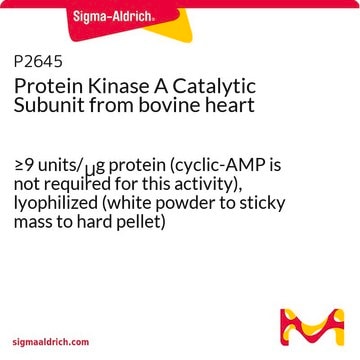P4532
(−)-N6-(2-Phenylisopropyl)adenosine
solid
Synonim(y):
(R)-N6-(1-Methyl-2-phenylethyl)adenosine, N6-(L-2-Phenylisopropyl)adenosine, R-(−)-PIA
About This Item
Polecane produkty
Postać
solid
Poziom jakości
siła działania
1.17 nM Ki for A1 receptors (using [3H]CHA in rat forebrain preparations)
kolor
white
rozpuszczalność
H2O: slightly soluble 0.3 mg/mL (Solutions may be stored for several days at 4°C.)
45% (w/v) aq 2-hydroxypropyl-β-cyclodextrin: 1.6 mg/mL (Solutions may be stored for several days at 4°C.)
temp. przechowywania
2-8°C
ciąg SMILES
C[C@H](Cc1ccccc1)Nc2ncnc3n(cnc23)[C@@H]4O[C@H](CO)[C@@H](O)[C@H]4O
InChI
1S/C19H23N5O4/c1-11(7-12-5-3-2-4-6-12)23-17-14-18(21-9-20-17)24(10-22-14)19-16(27)15(26)13(8-25)28-19/h2-6,9-11,13,15-16,19,25-27H,7-8H2,1H3,(H,20,21,23)/t11-,13-,15-,16-,19-/m1/s1
Klucz InChI
RIRGCFBBHQEQQH-SSFGXONLSA-N
informacje o genach
human ... ADORA1(134)
Działania biochem./fizjol.
Cechy i korzyści
Kod klasy składowania
11 - Combustible Solids
Klasa zagrożenia wodnego (WGK)
WGK 3
Temperatura zapłonu (°F)
Not applicable
Temperatura zapłonu (°C)
Not applicable
Środki ochrony indywidualnej
Eyeshields, Gloves, type N95 (US)
Certyfikaty analizy (CoA)
Poszukaj Certyfikaty analizy (CoA), wpisując numer partii/serii produktów. Numery serii i partii można znaleźć na etykiecie produktu po słowach „seria” lub „partia”.
Masz już ten produkt?
Dokumenty związane z niedawno zakupionymi produktami zostały zamieszczone w Bibliotece dokumentów.
Klienci oglądali również te produkty
Nasz zespół naukowców ma doświadczenie we wszystkich obszarach badań, w tym w naukach przyrodniczych, materiałoznawstwie, syntezie chemicznej, chromatografii, analityce i wielu innych dziedzinach.
Skontaktuj się z zespołem ds. pomocy technicznej









